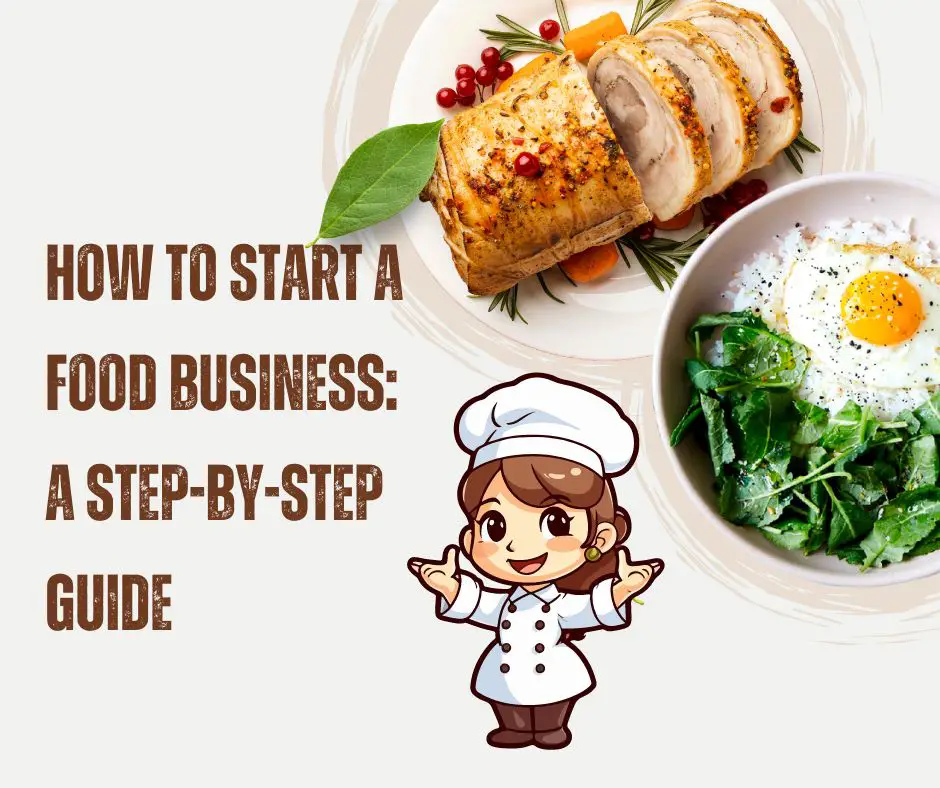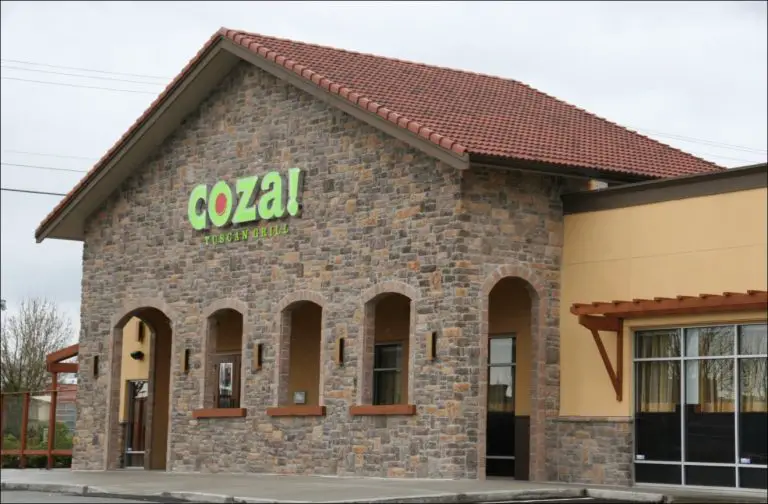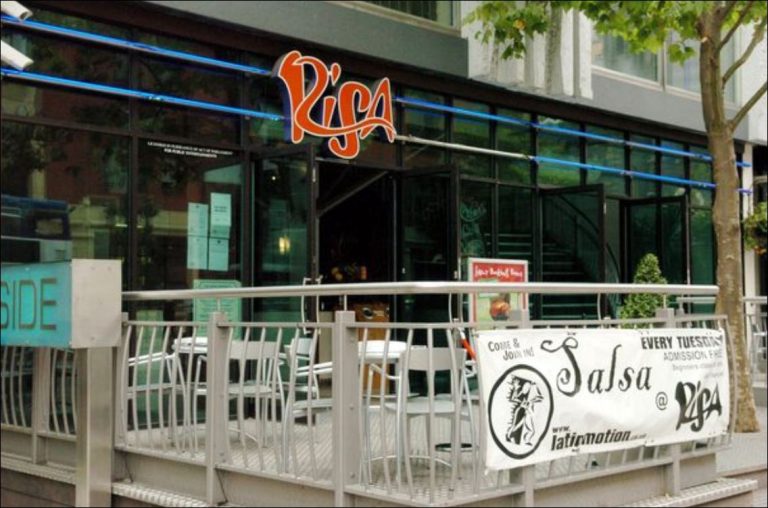How to Start a Food Business: A Step-by-Step Guide
Are you a food enthusiast dreaming of starting your own food business? That’s pretty exciting! However, it’s important to know that starting a food business can be challenging. There are many aspects you need to consider before diving in. But no worries, I’m here to help! In the following steps, I’ll guide you through everything you’ll need to know to start a food business.

Step 1: Assess your skills
If you’re reading this article, we’re assuming there’s a food industry concept you’re looking to start. That’s great! While it is true that interest is the first to start a business, you must examine your abilities and resources before starting your own business. The power of passion can take you an impressive amount of work, but when it comes down to the best way to start a business in the food industry, you’ll need determination and business acumen. Many business owners who are first-time entrepreneurs need to learn more about everything right from the start. They know how to locate experts when they encounter issues they don’t know how to handle or don’t comprehend. This is an important lesson to be able to grasp quickly. Much of the process of beginning a food company is based on tangible steps, such as deciding on your business’s structure and financing; there’s also the question of the soul: Are you prepared and willing to tackle this? Before taking your first step, consider your strengths, your network of support, and your resources. Better still, look up the available resources for you.
Operating a food business means you’ll need to grapple with:
- Payroll
- Hiring and firing employees
- Buying from suppliers
- Marketing
- Creating a menu
- Real estate
- Purchasing equipment
- And so much more…
After that discussion, it’s time to think about the more in-depth practical details of beginning a food-related business.
Step 2: Create a business plan
A business plan has many benefits for your small-scale food business. It’s an excellent method to record your ideas and techniques on paper, allowing you to guide yourself when creating and operating your company. A business plan may be helpful if you’re searching for financing to begin your food company.
SCORE is a fantastic resource to assist in creating a plan of action for your food company. It’s not easy to write one, but when you’re looking to start your own food company, you likely already have plenty of ideas to add to your business plan. Here are a few of the steps you’ll have to follow when creating your business plan.
1. Create a business budget
A crucial aspect of planning for business, especially if you’re in the market for funding, is your business’s budget.
A business budget should include taking into consideration all the expenses that you’ll need to cover for the initial operation of your company, the amount of money that will be required to run the company once it’s up operating, and an in-depth look at the way your company will earn money, and how much you’re expecting to make.
Some examples of costs you’ll be able to incur and what you must consider when setting up a food business are:
- What type of food company you’re launching
- Cost of staff and management team
- Equipment
- Initial investment in a food product
- Real estate
- Design of a physical space
2. Study your competitors
When creating an overall business blueprint, you must analyse your competition. The food business is highly competitive, and the market is crowded. Before you take the next step and begin your small-scale food business, you must know who else is in the market and what they’re up to.
If you’re looking for your competitors, consider what they are doing well and what they need to do. This will reveal the gap that you could fill with your company.
It’s also an excellent moment to start looking at costs and evaluating the costs of running a business and the actuality of the amount of money you’ll earn.
3. Find a hole in the market
The best way to start an enterprise in the food industry is to identify a market gap. What is the hole in the market that nobody else can fill? If no one is doing it, it does not necessarily mean there isn’t a need for it. Customers must want it and be willing to purchase it to earn a profit.
Locating a hole in the market can help you determine what type of food you’d like to offer and how you’d like to market it. There are many possibilities to choose from when considering selling your food items, including:
- Meal delivery
- Baked goods that are sold to other establishments that sell food
- Home-based food business
- Food truck
- Catering for special events and weddings
4. Choose a concept
If you are considering starting a business in the food industry, it is essential to determine the kind of food-related business you’d like to create. There are various options: brick-and-mortar restaurants, food trucks, and a catering business that operates from home.
Each of these possibilities can be an effective way to establish and manage your company. You can operate in one of these ways, hoping to shift to a different type of business later. Food trucks and catering services based at home come with their challenges but generally need less capital than a full-time brick-and-mortar establishment.
Step 3: Set up your business
After you’ve analyzed your market, you’ve identified what gap has to be filled, and you’ve taken the time to develop an outline of your business. Now, you’re ready to take the initial steps towards starting your food-related business.
1. Choose a business entity
The first step to setting up your food business is to choose a company entity. There are many options, and based on your specific circumstances, either is the best choice for your company.
Small-scale food companies’ most commonly used business structures are LLCs, sole proprietorships, and co-ops. Other options for business entities include partnerships, S-corporations, and C-corporations.
Sole proprietorship
One of the most accessible business structures is the sole proprietorship. Although a sole proprietorship can be easy to set up (and is popular with restaurants), its protection is also lenient. If someone is sick after eating your food and wants to eat it instead of suing your company, it would be necessary to sue you. They could also pursue your assets for compensation.
LLC
An LLC is a step higher than a sole proprietorship. A limited liability company is a legal entity that separates the company from its owner. A limited liability corporation limits an owner’s liability to the business. It also provides companies with tax efficiency and is simple in terms of the ownership structure, which is ideal for a business owner looking to have some protection but still be able to make some adjustments in paying taxes.
Cooperative
A cooperative, also called co-op, is a form of business organization owned and operated by several individuals. Every member or owner of the company owns a part of the company. Co-ops are among the most collaborative types of business and are extremely frequent in food businesses, including food manufacturing facilities, grocery shops, and farmers’ markets.
Selecting the appropriate organizational structure to run your upcoming food company can take time and may initially appear complex. If you decide to start your company and realize that you’ve picked the wrong structure, You can alter it. If you think this is an issue, consult an attorney to determine which is the best fit for your business.
2. Register your business
If your company plans to employ other employees, sign up for an EIN, a Federal employee ID number, through the IRS. If you apply on the internet, you’ll be able to receive an EIN in just a few minutes. EINs are required to get an EIN, which can help you obtain business loans, pay taxes, establish a bank account for your business, and much more. Therefore, this is a must.
You will also likely have to register your company in the state where you’re operating. The rules for doing this will differ from state to county, but typically, the information is available on the Secretary of State’s website. You must conduct a name search before registering to ensure that a competitor in your area still needs to own the desired name.
3. Register for all required licenses
A crucial aspect of starting an enterprise in the food industry is ensuring you’re licensed legally to cook and sell food items. There are numerous permits and certifications essential for businesses in the food industry.
It’s also important to remember that the type of license you require will be contingent on the kind of food establishment you’re opening, if it will be selling alcohol, and the location you’re in. Local jurisdictions may have different requirements for food establishments.
Here are a few types of certificates and licenses that you could require to run a food company:
- A food handling permit
- An Occupancy Certificate, or CO, to your establishment
- A liquor license, also known as a license for wine and beer to sell alcohol
- A food license is required to cook and sell food from your home
- A resale permit allows you to purchase ingredients wholesale
You’ll need specific permits and licenses for whatever type of food-related business you plan to start. The local government office will be able to assist you in determining which rights are required for the kind of business you’re operating.
4. Get insurance
In a company that employs employees and has physically located premises that host customers, you must have specific types of insurance to ensure your business is protected in all situations. You might consider:
- General liability insurance
- Auto insurance for commercial vehicles
- Workers” compensation
- Insurance for commercial property
- Mobile food vendor insurance
5. Separate your finances
Whichever kind of business entity you’ve selected for your business, it’s essential to keep your finances separate from your business’s finances. This helps you calculate your taxes and expenses.
If you are starting a small food-related business, open a new bank account to fund your business. It can be done by the bank you have used to manage your banking. However, if you wish to change things up, a few newer banks will allow the opening of an account for corporate check accounts online.
You may also have a separate credit card designed to be used for business. If you choose to use a corporate credit card, you’ll be able to grow your credit line for business (assuming you’re using it responsibly and paying your bills in time) and, in the end, assist you in getting loans for business down the time.
Step 4: Look for funding options
When contemplating starting your own food-related business, one of the main worries is how much you will require. The initial investment for an enterprise can be very costly, and it could take a long time, sometimes even years, before your company becomes profitable.
In the beginning, many new food companies require financing from investors, searching for loans, or seeking assistance from family and friends. Bank loans can be an excellent alternative to fund your business, but banks tend to be reluctant to provide loans to new entrepreneurs. There are other lenders that you could consider.
1. Equipment loans
An Equipment loan is an excellent alternative if you want to purchase costly restaurant equipment or are considering buying food trucks. A loan for equipment is straightforward. It is the loan to buy the equipment and acts as collateral. If you don’t repay the loan, the equipment could be taken back to pay.
This kind of loan is much easier to obtain than other types.
2. Family and friends loans
If you’re beginning a food company, Who would be better to assist you than your family and friends? If you’re saving to get your company up and running, don’t hesitate to ask for assistance. Make a loan agreement with your lender and follow through with the deal.
3. Line of credit
The line of credit is an excellent alternative for those beginning a business in the food industry. Lines of credit grant access to a bank account. You can borrow money from this fund, up to the amount available in the fund, at any time you require. This is an excellent alternative for businesses that are limited in cash for a short period.
4. SBA microloan
Food businesses that want to begin the company of a food truck or a restaurant that requires a bit of money to start can get an SBA microloan. A SBA microloan is a type of $50,000 loan backed by Small Business Administration guarantees. The loan provided by the SBA is regarded as the most beneficial option because of the low interest rates and flexible repayment schedule.
Step 5: Invest in product and tools
If you’re thinking of how to begin your own food-related business, it is more than cash and a properthe business entity to make your dream come true: Equipment for food preparation and some way to make it available for sale.
1. Research suppliers
The most crucial relationships you can build as a business owner in the food industry are with suppliers. These are the suppliers that make sure you have the foods and other products that you require to sustain your business.
Suppose you know of a restaurant in your neighbourhood that closed recently. In that case, you can purchase furniture or equipment for a reasonable price or cash off any extra inventory they’ve stored away. Food items can be bought locally; trade publications and professional associations, such as The National Restaurant Association, can help.
Find reliable and trustworthy suppliers to ensure you get your food and other supplies on time and at the most affordable price. The place you purchase your food can be a point of differentiation for your food business, as sustainable companies are more appealing to clients in recent times.
2. The point of sale is a system
The point-of-sale system, or POS, is a modern version of cash registers. The POS is how servers take orders, take payments from customers and collect payments from customers.
There are numerous restaurants’ POS software that are available which offer greater ease of use for your employees, such as:
- Clover POS
- Square for Restaurants
- TouchBistro POS
- Lightspeed Restaurant POS
- Toast POS
- Loyverse POS
Specific models, like Square, a popular choice, are great for mobile-based businesses because you will only require an access point for your card to conduct business if you own a compatible tablet or phone to which you can connect. Other options, like TouchBistro, are best suited for restaurants that offer full service and could benefit from a system that provides floor and customer planning management tools. The most suitable POS system for your needs depends on your business’s requirements in the food industry.
3. Rent or buy the necessary equipment
Before being open to the public, you’ll need a wide range of items to ensure your restaurant welcomes guests, serves delicious food, and earns profits for your business.
Apart from the components of your POS system, Here are a few examples of what you might require:
- Kitchen Appliances
- Cold storage
- Cookware
- Utensils and flatware
- Glassware
- Furniture for the restaurant
- Cleaning equipment
You can purchase some of them in bulk; however, depending on the size of your food company, you may want to consider renting equipment that could cost less. If you own a catering company, you may not have to buy a lot of kitchen utensils or flatware; renting a trial on a case-by-case basis will help you save money and let you know what your ideal order could be when you’re looking to purchase.
Step 6: Hire staff
Depending on the kind of food company you’re launching, it may require help. Even the smallest company usually has an additional staff to help increase production. How you hire them and how many employees you employ will depend on your requirements. For instance, food trucks can only accommodate a few employees.
However, a larger-scale restaurant will require more staff to ensure the floor runs smoothly. A few examples of the stuff you could need are delivery hosts, drivers, servers, dishwashers, bussers, bartenders, and bussers. Be sure to include hiring employees in your business plan, as you may have to pay for additional expenses such as purchasing workers’ compensation.
Step 7: Set your pricing
The most essential aspect of starting your food business is setting the price. Generating income with the proper cost for the food products you see is more accessible.
1. Do some market research
The first step in determining the price you should charge for certain meals is to conduct market research. Visit your competition to find out what they’re serving, how much they serve, and what they’re charging.
This provides a good beginning point to determine the appropriate price for food. However, it’s just a starting point. While it can give you the idea, it must provide insight into whether this business is profitable.
It is also essential to be aware of the latest trends in food and what they say about consumer preferences. For instance, the trend towards healthier food suggests that your company could be successful if there’s an audience that is health-conscious to tap into and is capable of convincing them about the health advantages of your products.
2. Find out the cost of your product
Although it’s not an easy task, it’s possible to determine the total cost of a meal. It is essential to be aware of the many small ingredients in the dish, such as the seasonings, oils and garnishes. It may seem overwhelming; however, professional kitchens use many calculations and formulas to develop these figures, and you should learn about them.
With a bit of math and a little magic, you can set your food’s price into some profit, including the labour expenses, serving and cleaning up after the dish.
Step 8: Create an online presence
Although you may think the food business is just about food, and it is, you also have to bring customers through the door to eat your food. Food has a reputation for being difficult to penetrate. For instance, 85% of products sold to consumers fail within the initial two years. The first step in avoiding your product’s fate is establishing an online presence and building your customers.
1. Social media
Although food is all about taste, many customers shop using their eyes. If you’re trying to establish an internet presence to promote your restaurant company, using social media is one of the quickest ways to achieve that.
Instagram is a restaurant’s most trusted partner. Upload delicious photos of your food; people will likely want to taste it. Be sure to engage with customers and make them think of your company as flexible to their needs.
2. Website
While only some restaurants are online, establishing credibility for your business can be an opportunity. A website is an area to share information with customers, such as menus, hours of operation, and even specials. There are many ways to create your small-scale food business website, making selling products online more accessible than ever or incorporating valuable features like reservation widgets.
3. Online review sites
Although many restaurant owners loathes review websites, it’s an essential evil for those with catering companies, restaurants, and food trucks. According to a TripAdvisor survey, 94% of U.S. diners will consult online reviews before going to a restaurant’s food. That’s a large majority of customers. If you’re a restaurant owner, you may only like websites some of you’d like. However, you must maintain a presence. Consider offering a complimentary perk to encourage customers to write reviews.
Step 9: Serve up delicious foods
If you’re contemplating starting your own food-related business, the most important thing to consider is food. You’ll bring the food you prepare to your menu and how diners and the seasonal changes perceive it. The business of food isn’t all about the food. There’s plenty of time that is spent operating and running the business. Make sure you are prepared to be successful. However, ensure that you’re equally committed to preparing delicious meals!
Final thoughts
You can start with many food-related businesses, but it will be a tough battle. For help getting an edge, look at these steps to create your own food-related business. Focus on the fundamental steps, like drafting an effective business plan and registering for any licenses that you may require. You’ll be in an excellent position for your food-related business to expand. Therefore, you should refine your menu and be ready to serve the masses. With a little effort and organization, there’s no limit to what you can accomplish.

I am Dipak Salvi. I’ve been a blogger since 2010, and I love to write. I really like to write about Survey, cars, technology, and money. I also write about fitness and health. I run a lot of blogs, such as https://commercialvehicleinfo.com. You can contact me at indianwheelsvlog@gmail.com





